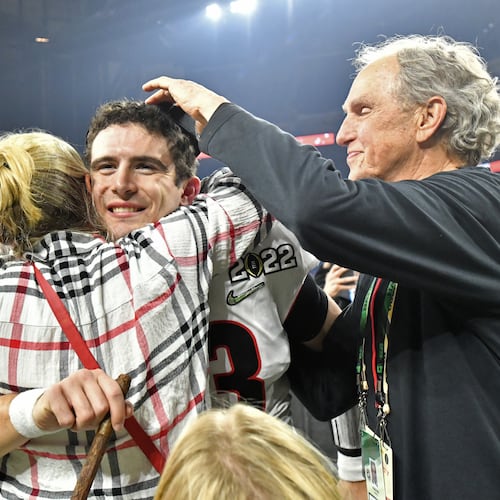During a SportsCenter interview not long ago, Dale Earnhardt Jr. recalled the day in the mid-1990s when he brought home his first computer-generated racing game. His daddy, so adept at racing the real things that he would win seven NASCAR series championships, emitted a mighty harrumph.
There was nothing about the original Dale Earnhardt to suggest he’d accept any version of his sport that didn’t include, oh, let’s say, actual cars, for one thing. And actual speed. And, sadly enough to say for someone who died racing, real consequences. There was nothing virtual about the man.
“When dad saw that in my home, he said those things are a waste of time, computers are a waste of time,” Jr. recalled.
“I’d probably be rubbing that in his face now.”
So, let’s now choose sides as to which extreme of the Earnhardt divide you fall.
If you believe imitation crab meat is really as good as the real thing, if you think that a place called Hogwarts might exist, if you didn’t take a stand and stop gaming when they came out with Ms. Pac-Man, then by all means go with Junior.
Or, if you never did understand “The Matrix,” if you insist upon playing your own lottery numbers rather than trusting some machine to spit out a winner for you, if you think reality, while messy, is still better than the alternative, then come on over here with me.
More than any other sport, racing has attempted to fill the competitive void created by the coronavirus with virtual sport. Both NASCAR and IndyCar are involved in nationally televised eRacing endeavors – real racers guiding faux cars from their homes. Truly, these are desperate times.
Personally, joystick-shift style competition seems about as fulfilling as showing a picture of a ham to a hungry man. But some people are watching, more than 1.2 million tuning in the last couple weeks to eNASCAR iRacing Pro Invitational events.
Last weekend on Fox, William Byron, who of course is young (22) and grew up training on SIM racing, won the race at virtual Bristol. An accomplished driver in the truck and Xfinity series, he has yet to win in more than two years at NASCAR’s major league level. But he is a veritable eRichard Petty.
Saturday afternoon, Earnhardt Jr. will partake of a simulated IndyCar event on NBC. There is no shortage of make-believe to watch — there was even short track competition earlier this week.
Old hand Jimmie Johnson, himself a seven-time series champion — on what was supposed to be his retirement tour – has instead thrown himself into this ersatz racing. He says he was spending nearly five hours a day training on a simulator to prepare. In his first race, the so-called Dixie Vodka 150 (of course there was sponsorship), he finished 31st in a field of 35. He has placed 19th and 21st in two others. In this world, he is the equivalent of your grandfather attempting to use Zoom.
But, bless his heart, he’s trying hard and really getting into the spirit of remote driving. “It brought a little bit of structure for me; more than I anticipated honestly, because I was just so far behind in the SIM experience,” he has said.
“But to see the viewership numbers and understand how much fun the fans are having watching it, it has motivated me and has me highly interested to keep it going. As we look around and see other sports try to figure out how to virtually offer something for their fans, we were one of the first if not the first, to do it and do it well and break all kinds of records in the process.”
They do dress up these shows impressively. Jeff Gordon and the rest of the first-team broadcasters worked last week’s race, lending it the faintest scent of legitimacy. Out from beneath their helmets and fire suits — heck, they can compete in footie pajamas now, if they like — the drivers get to show their more relaxed, human side in this forum. And they even broke into contrived salutes to their sponsors whenever possible, just like any other race day.
Alas, there just is no escaping the fact that it’s not the real thing. From the driver’s side, it is “as close to the real thing as you can get without feeling the car in the seat of your pants,” as Earnhardt said. For fans, too, there is a visceral aspect to real speed in real cars that can’t be duplicated.
I did learn a new term last week: Rage-quit. It’s when a gamer pulls a Roberto Duran and just walks off in mid-competition.
Drivers tend to race a little differently when there are no real risks. They wreck each other with impunity. So infuriated was Bubba Wallace last week when he got turned sideways that he rage-quit, declaring, “This is why I don’t take this (insert actual, real-world profanity here) seriously.” Others took it more — far too much more — earnestly: Blue-Emu pulled its sponsorship of Wallace’s make-believe race car.
But here’s an idea: Modify the games so that after such crashes, the drivers can emerge from their cars, swinging fists and helmets, engaging in some Grand Theft Auto-quality violence. Then count me in.
About the Author
The Latest
Featured


